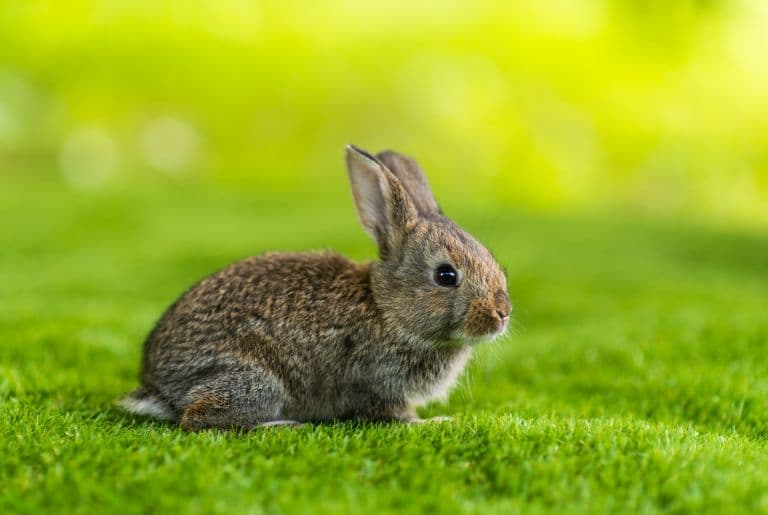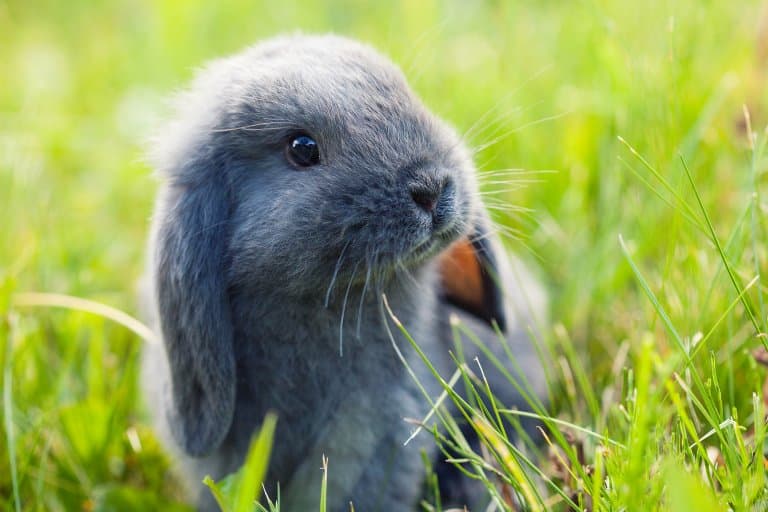Rodents are the most diverse order of mammals, with around 40% of mammalian species being grouped into Rodentia.
But around the time of the dinosaurs, when many mammals were jumping on the Rodentia bandwagon, a small group of rodent-like animals chose a different path. Today, Lagomorpha pales in comparison to Rodentia when it comes to diversity: the latter contains over 2000 species, while the lagomorphs make up just over 100.
Almost all of these 100 are rabbits and hares – two very similar animals, both different from rodents by their four incisors, strictly herbivorous diets and female-weighted sexual dimorphism. But if they’re so similar, how do we tell them apart?

Let’s take a look at the differences between rabbit and hare.
1. They’re a genus apart
There are two families of lagomorphs. One contains the mouse-like pikas, and the other contains both the rabbits and the hares. So, both are closely related and separated at the genus level.
Hares are members of the genus Lepus. Rabbits belong to all the others. There are 8 genera of rabbits and about 300+ breeds of domestic rabbits.
There’s only one genus of hare. The best one.
This gets confusing with the common names. For example, the American jackrabbit is actually a hare, and the rock and Hispid hares are both rabbits. So, the first and simplest way to separate them is to check the genus. Is it Lepus? Then it’s a hare. Otherwise, it isn’t.
2. Rabbits are far more social
Rabbits typically live in burrows, along with a heck of a lot more rabbits. Some are more solitary, but these are the exception, and on the whole, rabbits enjoy a lot of company. A group of rabbits is often called a bevvy, though some insufferable fanatics call it a fluffle. This is inappropriate and should be discouraged.
Hares, on the other hand, are far less social, and only really tolerate one another when it’s breeding season or when food is plentiful. When hares do come together, it’s called a drove. They don’t dig burrows, and they don’t tend to remain in a drove for very long at a time. 1

3. Rabbits are smaller
One obvious difference is the size of these animals. Being mostly fossorial, rabbits benefit from a slightly smaller build. Though, they’re not as fast or as agile as hares.
While a rabbit will drum on the ground and bolt into a burrow at the sign of danger, a hare prefers to get out of the area.
4. Hares roam
Rabbits are soft and round and like to wear aprons and use words like “Scallywag” while waving a rolling pin. They’re homebodies and live happily in their little rabbit villages without wondering too hard about what goes on in the big, wide world.
Hares are not like this.
Hares will travel long distances, maintaining wide, extensive ranges, and can escape even the fastest dog breeds simply by running, very, very far. Hares are real athletes, and despite their size, are far more agile than their burrowing cousins.
Some estimates put the hare’s top speed at around 65 km/h or 40pmh, and this is an adaptation to being chased by some of the most fearsome predators on the plains. 2

5. Hares are born with their eyes open
Since rabbits live underground and have a lot of protection from their relatives, they can afford to remain a bit useless after birth. Rabbits are born blind and hairless, and take their sweet time growing up. Baby rabbits are known as kits.
In contrast, the hare’s world is fast-paced and dangerous and it’s prudent to adapt to this as soon after being born as possible.
Hares are birthed in a shallow depression in the ground and come out wide-eyed and ready. These babies are called leverets.
6. Hares are tougher
All of this amounts to a pretty simple summary: hares are badass. Rabbits are no slouch and can give a nasty kick, but there’s a reason there was never a Bucky O’ Rabbit.
Hares are bigger, faster, stronger and far better equipped to lead the United Animal Federation to victory over the toad empire.
Their choice of habitat reflects this. Rabbits love a wooded area, safe and warm and with nice grassy clearings. Hares live in the Arctic, in vast plains and Steppe ecosystems. They’re the best at roughing it, and even their pregnancies can be hardcore. 3

7. Female hares can carry two litters at once
European hares are capable of a phenomenon known as superfetation. Females can get pregnant, and then towards the end of that pregnancy, become fertile again. This way, they can begin carrying the second littler before the first is even born.
This really twists the knife when you consider that breeding is the one thing rabbits are supposed to be best at. 4
Final Thoughts
So there you have it –rabbits versus hares!
The differences between rabbits and hares come down to the choice of lifestyle each adopts. Rabbits are smaller, timider and live together in burrows for protection. They’re born as kits, age more slowly and rarely if ever learn to fly a spaceship.
Hares are born in the wilderness. Leverets with their eyes open, covered in fur and ready to fight. They don’t have as much time for cuddles and take their positions seriously from the start.
They’re much bigger, lankier and stronger, and don’t appreciate being called fluffy.
Both animals are superficially similar in appearance, but they tend to live in very different worlds. The sedentary rabbits fill wooded and grassy clearing niches, while the adventurous hares spend a lot more time alone in the wasteland like an outcast vault dweller.
The easiest way to tell them apart is whether they leg it or hide. If you come near and it bolts underground, it’s a rabbit. If it sprints off across the tundra like a bat out of hell, it’s a hare.
Fact Sources & References
- https://kids.britannica.com/students/assembly/view/171835
- https://icwdm.org/species/other-mammals/hares/
- https://www.nationalgeographic.com/animals/mammals/facts/arctic-hare
- https://www.sciencedaily.com/releases/2010/09/100921174210.htm





